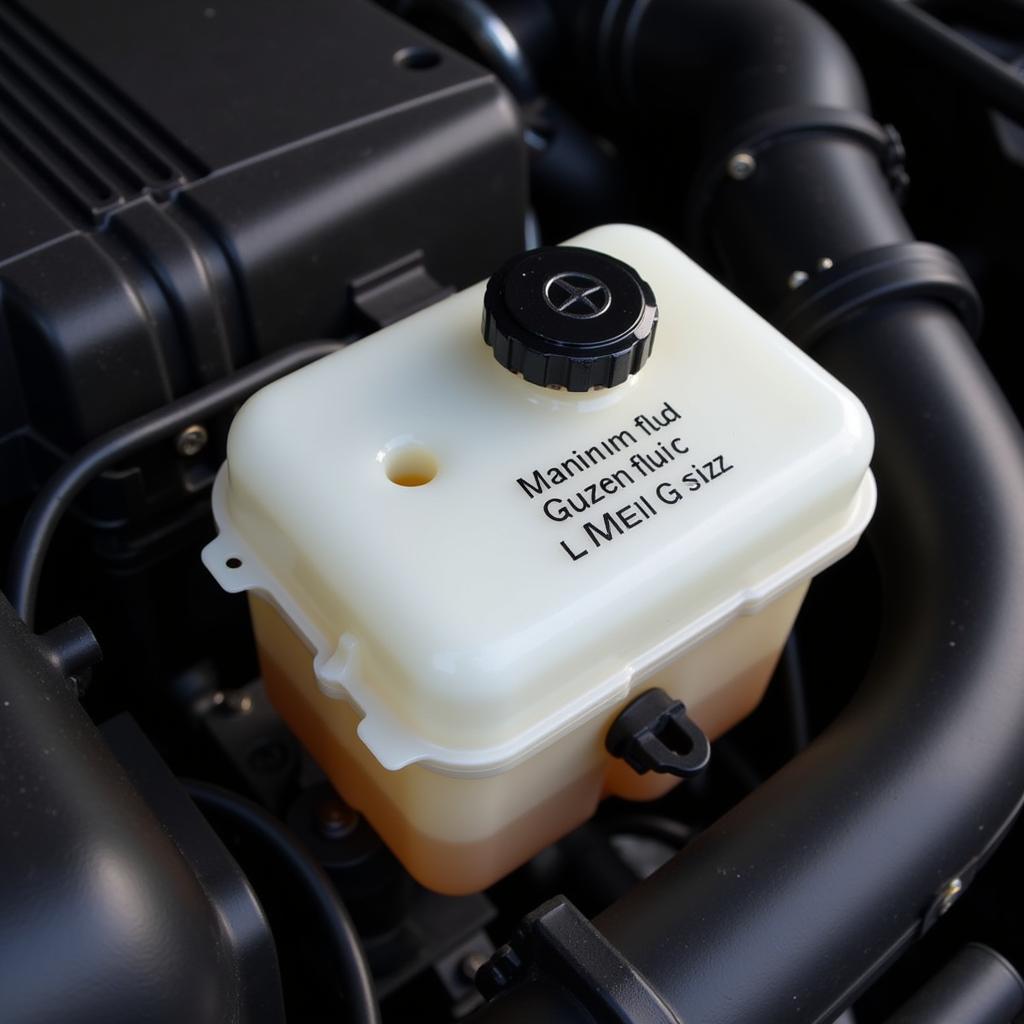A red brake warning light on your W211 Mercedes-Benz is a serious safety concern that should never be ignored. It typically indicates a problem with your braking system that requires immediate attention. This article will guide you through the common causes of a W211 red brake warning, how to diagnose the issue, and potential solutions.
Understanding Your W211 Brake Warning System
The red brake warning light in your W211 is part of a sophisticated system designed to alert you of potential brake problems. When the system detects an issue, it illuminates the warning light and may also display a message on your dashboard.
The brake warning system monitors several components, including:
- Brake Fluid Level: Low brake fluid is a common cause of the red brake warning light.
- Brake Pad Wear Sensors: Most W211 models have brake pad wear sensors that trigger the warning light when the pads are worn down.
- Parking Brake: If your parking brake is engaged, the red brake warning light will usually stay on.
- ABS System: While less common, a fault within the Anti-lock Braking System (ABS) can also trigger the warning light.
 W211 Brake Fluid Reservoir
W211 Brake Fluid Reservoir
Common Causes of a W211 Red Brake Warning
Here are some of the most common reasons why your W211 might display a red brake warning:
- Low Brake Fluid: This is the most common and often the easiest to fix. A leak in the brake lines, calipers, or wheel cylinders can cause brake fluid loss.
- Worn Brake Pads: Over time, your brake pads wear down, eventually triggering the brake pad wear sensors.
- Faulty Brake Pad Wear Sensor: Sometimes, the sensor itself can be faulty, triggering the warning light prematurely.
- Faulty Brake Light Switch: The brake light switch activates your brake lights when you press the pedal. A faulty switch can also trigger the brake warning light.
- ABS Control Module Issues: While less common, a problem with the ABS control module can cause various braking system issues, including triggering the red warning light.
Diagnosing the Problem
If your W211’s red brake warning light comes on, it’s crucial to diagnose the issue promptly. Here’s a step-by-step approach:
- Check the Parking Brake: Ensure the parking brake is fully disengaged.
- Inspect Brake Fluid Level: Carefully open the brake fluid reservoir and check the fluid level. If it’s below the minimum mark, add the appropriate brake fluid type.
- Visually Inspect the Brake System: Look for any signs of leaks around the brake lines, calipers, and wheel cylinders.
- Check Brake Pad Thickness: If possible, visually inspect the brake pads for wear.
- Read Fault Codes: If you have access to a diagnostic scanner, you can read the fault codes stored in the vehicle’s computer. This can pinpoint the exact cause of the warning light.
When to Seek Professional Help
While some brake warning light issues can be resolved with basic troubleshooting, it’s essential to seek professional help if:
- You are not comfortable working on your vehicle’s braking system.
- You suspect a leak in the brake lines.
- The warning light remains on even after adding brake fluid.
- The diagnostic scanner reveals a fault code related to the ABS system.
Brakes are a critical safety system, and it’s always best to err on the side of caution. A qualified mechanic can accurately diagnose and repair any brake problems.
Tips for Preventing Future Brake Problems
Here are some tips to prevent future brake warning light issues:
- Regular Brake Inspections: Have your brakes inspected at least once a year or every 12,000 miles.
- Timely Brake Fluid Flush: Brake fluid should be flushed and replaced every 2 years or as recommended by your Mercedes-Benz owner’s manual.
- Quality Brake Pads: Invest in high-quality brake pads that are designed for your W211’s specific driving conditions.
- Address Warning Signs Early: Don’t ignore any unusual noises, vibrations, or changes in brake pedal feel. Address these warning signs promptly to prevent more serious issues.
Conclusion
A red brake warning light on your W211 is a serious issue that should never be ignored. By understanding the common causes and following the diagnostic steps outlined in this article, you can take the necessary action to ensure your safety on the road. Remember, when in doubt, always consult with a qualified mechanic.
